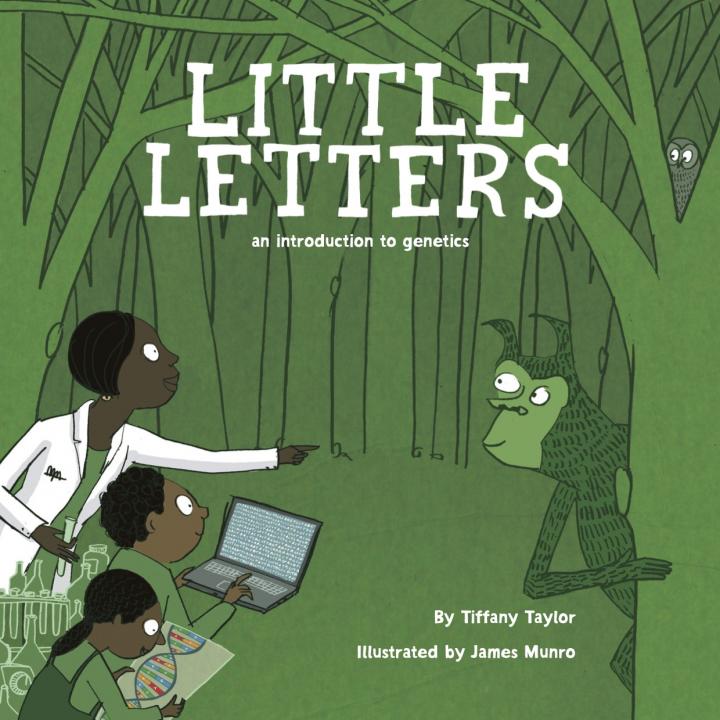New children’s story book about genetics

Credit: Dr. Tiffany Taylor/James Munro
How do you explain genes and genetics to a six year old? Parents trying to home-educate their children during the lockdown can now combine their science learning with a fun bedtime story, following the launch of a new children’s book that gently introduces the basics of genetics to youngsters of primary school age.
Little Letters is the illustrated story of a scientist and her two children who discover a new type of animal, called a Rinkidink, whilst going out for a walk. They take a tuft of its fur to the lab to test its DNA and find out more about it. Using rhyming language, the book explains DNA, genetics and the role of nature and nurture in making each person unique.
The book is the third children’s story written by Dr Tiffany Taylor, Evolutionary Biologist and Royal Society Dorothy Hodgkin Research Fellow at the Milner Centre for Evolution at the University of Bath.
Her previous book, Little Changes, introduced the concept of evolution and also starred the Rinkidinks. As a mother of two small children, Dr Taylor feels strongly about the importance of engaging a young audience with science.
“Genetics and evolution are the foundation of our understanding of biology, and they are part of the national curriculum at primary school level, but many teachers and parents find it really tricky to explain these abstract concepts in a simple way that young children can understand.
“The idea with this book is to tell a fun bedtime story that explores the ideas of genetics through a narrative that really engages children.
“At the Milner Centre for Evolution, my colleagues have been researching in schools the most effective ways of teaching evolution and found that it really helps pupils’ understanding of the subject if we teach them about DNA and genetics first. So this new book aims to do just that.”
Director of the Milner Centre for Evolution, Professor Laurence Hurst, said: “Little letters is not simply a beautifully illustrated storybook; it also provides a great introduction to DNA and genetics.
“Who isn’t interested in why it is that we tend to look like our parents! Our research has shown that not only is it important to learn genetics before learning about evolution, but in large in-school randomised trials we also found that a really engaging story is the most effective mechanism for learning in primary age children.
“It’s a great bed time story with learning at the same time – I really hope that parents and their children find delight in this book.”
The new book is available for free online (https:/
Dr Taylor has filmed a book reading and will be visiting local schools to promote and distribute the book when they reopen.
The book was illustrated by Liverpool based animator and illustrator James Munro, and was supported by a Public Engagement award from the Genetics Society.
The Milner Centre for Evolution also supports teachers in secondary education teaching evolution through a free online course available through FutureLearn.
Dr Taylor reads the book: https:/
Little Letters is available free online: https:/
###
Media Contact
Vicky Just
[email protected]
Original Source
http://www.




